| Newsmore | ||||||
|
| Culturemore | ||||||
|
| Tourismmore | ||||||
|
| Economymore | ||||||
|
| Lifemore | ||||||
|
| Around Chinamore | ||||||
|

| Newsmore | ||||||
|
| Culturemore | ||||||
|
| Tourismmore | ||||||
|
| Economymore | ||||||
|
| Lifemore | ||||||
|
| Around Chinamore | ||||||
|
| East Meets West |
Chris Buckley: Extreme TextilerBy PENELOPE COLVILLE
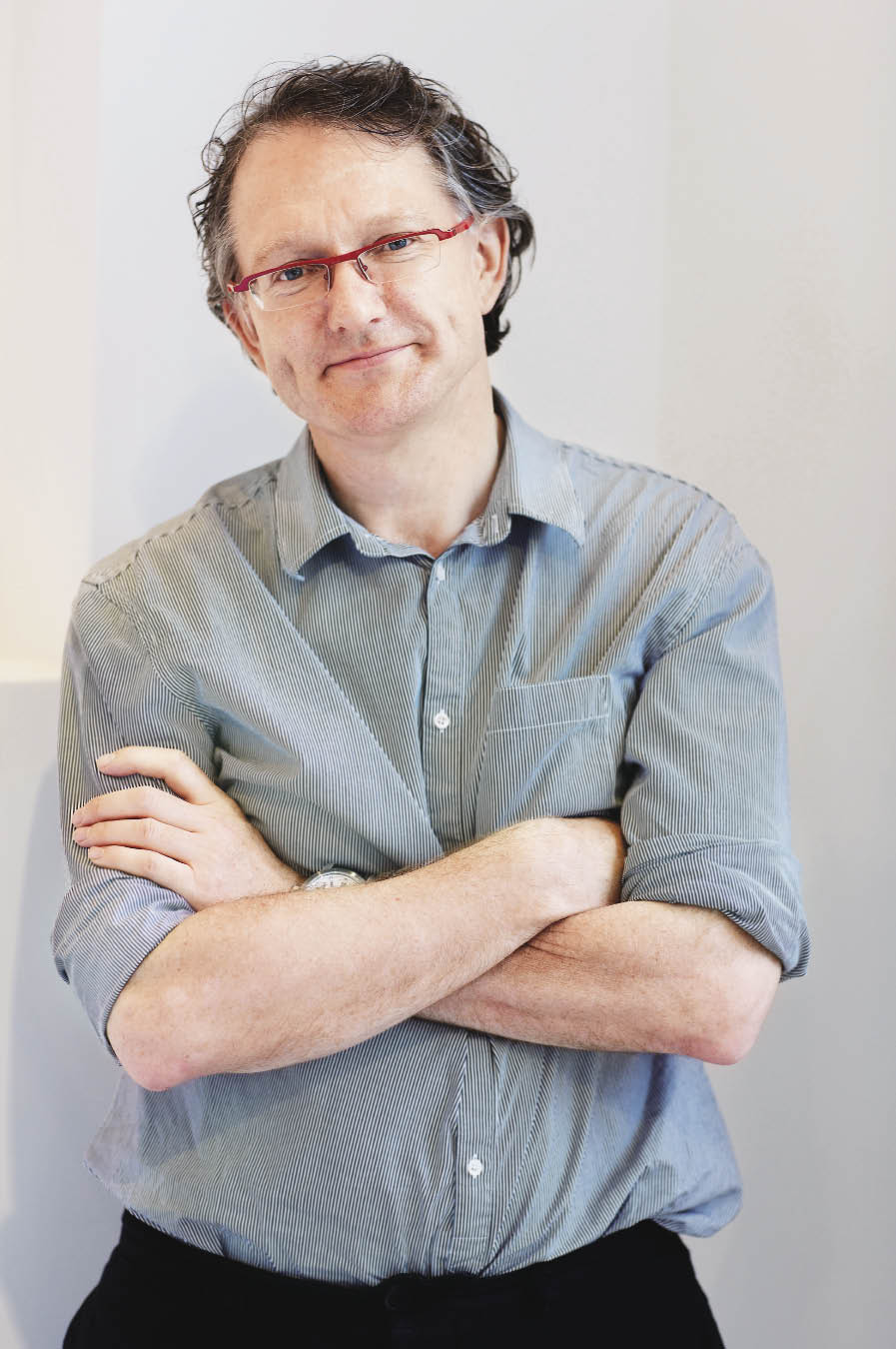 Extreme textiles is a name we might associate with a carpet that can report the footsteps of an intruder or the heat of a fire ( don't laugh; they exist!). But that's not the sort of extreme we have in mind when discussing Chris Buckley's work. It's more along the lines of Mathilda McQuaid's lecture on high-tech textiles at the Copenhagen conference "Avantgarde - innovative cooperation between craft and businesses". Mastering a craft is a way of thinking, she says, and crafts help us to express our thoughts on the design of a product. Buckley's contributions to Tibet, to China and to the art of carpet making has been a curious high-tech, low-tech mix. His research on traditional textiles has helped recover dye recipes and preserve the lost craft of natural dyemaking in Tibet; his workshop has introduced modern non-toxic dyes to carpet-making there, as well as finding wider markets for nomad-harvested pure wool rugs and cloth.
Buckley, a British citizen and former corporate employee of Proctor and Gamble posted to Japan, first visited Tibet in 1996. Like many ex-pats he harbored an interest in old carpets and bought a few. A friend had a small rug-selling operation in China and when he transferred out, sold it to Buckley, who intended to pursue it as a hobby. As he learned more about rugs though, he realized the shortcomings of his inherited stock and the tricks used to keep prices down – the synthetic colors, the machine-spun wool – things that contributed, he says this mildly, to an unexceptional appearance. Finally there was the pandering to a general public resistance to new designs. He thought he could do better, and do some good as well.
At that juncture he intersected with an NGO focused on Tibet that had set its heart on developing artisan crafts and finding markets for the products. The NGO is no longer in operation, but the situation they helped Buckley understand was that Lhasa and the region had high tourist traffic but was overrun by souvenirs made in India and the rest of China. Much of the region's raw materials were going overseas and bypassing all opportunities for value-added revenue. Its indigenous crafts were being lost as towns offered economic opportunities that sucked populations out of the countryside. That said, Buckley emphasizes that, " Tibet was not 'exploitable'. The population has options for local livelihoods." So enterprises need not operate with the 'fair trade' concept that seeks to provide an alternative to businesses that treat people like a resource to be secured at rock bottom wages. "Enterprises in Tibet can be based on what the market will bear and done right, everybody benefits" he concludes.
Buckley, as they say, had his work cut out for him. Torana House has carpet and textile showrooms in Shanghai and Beijing, but it is 40 kilometers outside of Lhasa where Tanva, the dyeing and weaving workshop, is making a difference to indigenous Tibetan lives.
The mission of making a sustainable business out of local crafts in Tibet entailed not just 'corporate responsibility' but resurrecting the craft and supporting the social conditions on which eco-environmental objectives and quality standards are based.
The first problems to be tackled were technical. Natural dyes for small scale production are still desirable; besides being non-polluting (the workshop can safely wash its dyes in an irrigation channel), the colors are subtle and the 'natural dye' label has cache with buyers. To recover the traditional knowledge and skills Buckley sought out and interviewed older Tibetans once involved in the industry. Then the workshop Tanva was set up and Norbu Tsering, a local, was appointed his general manager. The workshop imports the materials used to make indigo blue, and buys local materials for other colors in the spectrum they work with, such as madder (red, orange), rhubarb root (yellow) and walnut skins (browns and tans). For larger scale production, the workshop imports dyes from Switzerland of such good quality that they are also non-polluting. Tanva maintains a 'dye bank' of natural dyes in 1 to 2 kilo packages for local sale and use, and also sells the imports.
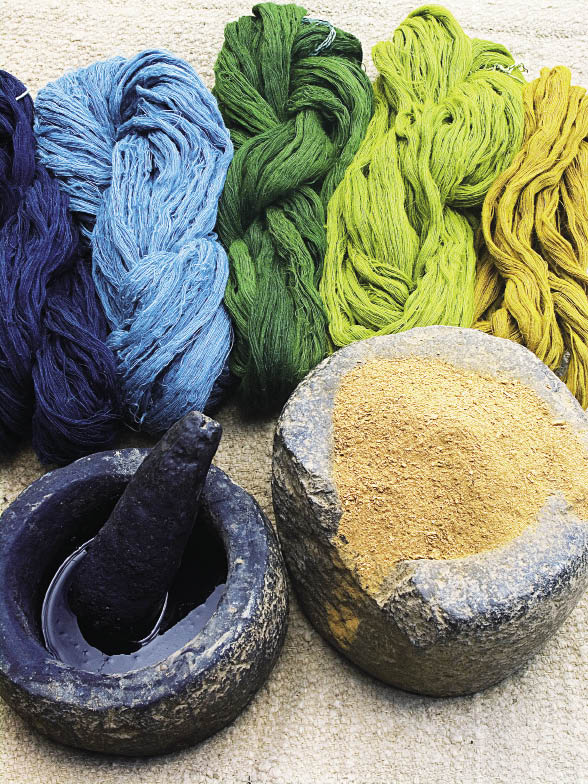
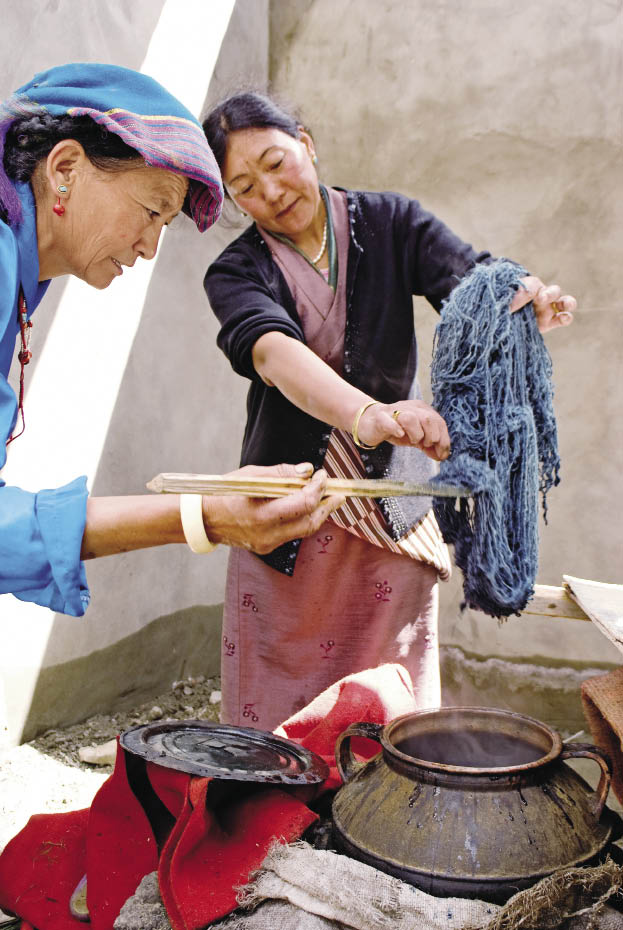
As with any business, questions of efficiency needed to be addressed. Knotting and weaving could always be done at home and there was no reason for Tanva to compete with cottage industries. But villages used to have small communal workshops where jobs requiring concentrations of human labor could be performed, namely dyeing, washing, trimming and binding. They have largely disappeared, so the workshop houses a slipway facility for the big jobs like washing, and equipment that will mechanically trim carpets with a roller in just minutes instead of the tedious hours independent artisans used to spend. The work you still want to be done by hand, like the art of knotting, remains part of the handicraft, and even part of cottage industry. The sorting out of independent and collective labor in this way means the 'hand-made' designation for rugs becomes more commercially viable.
Buckley is supporting, not competing with, organized groups of local artisans. "Tibetans don't have a lot of cash so you don't expect them to have the cash flows to front for expensive natural or synthetic dyes. Tanva dyes the wool stocks, creates a 'wool bank', loans the wool to the weavers, and when they return a finished product they are paid for their work."
Sensible partnerships and supplier relations also help ensure Torana's market position and business longevity. Tanva uses 100% genuine Tibetan highland carpet wool for the rugs made at their workshop in Lhasa, using no additives or treatments. Two related products came to Buckley's attention; nambu is a traditional woollen cloth used in Tibetan furnishings and clothes, and Wangden rugs are a unique type of super thick mats made especially for ceremonial and meditational use by monks. This means that for business stability in Torana's retail stores in Beijing and Shanghai, they added two more carpet suppliers to augment the products of their own workshop: the Michaelian and Kohlberg company have been making handmade carpets in China for more than 20 years and specialize in Middle Eastern techniques, and dealers of kilims in Afghanistan are a source of products that really stretch Torana's price points across the economic spectrum of rug-lovers.
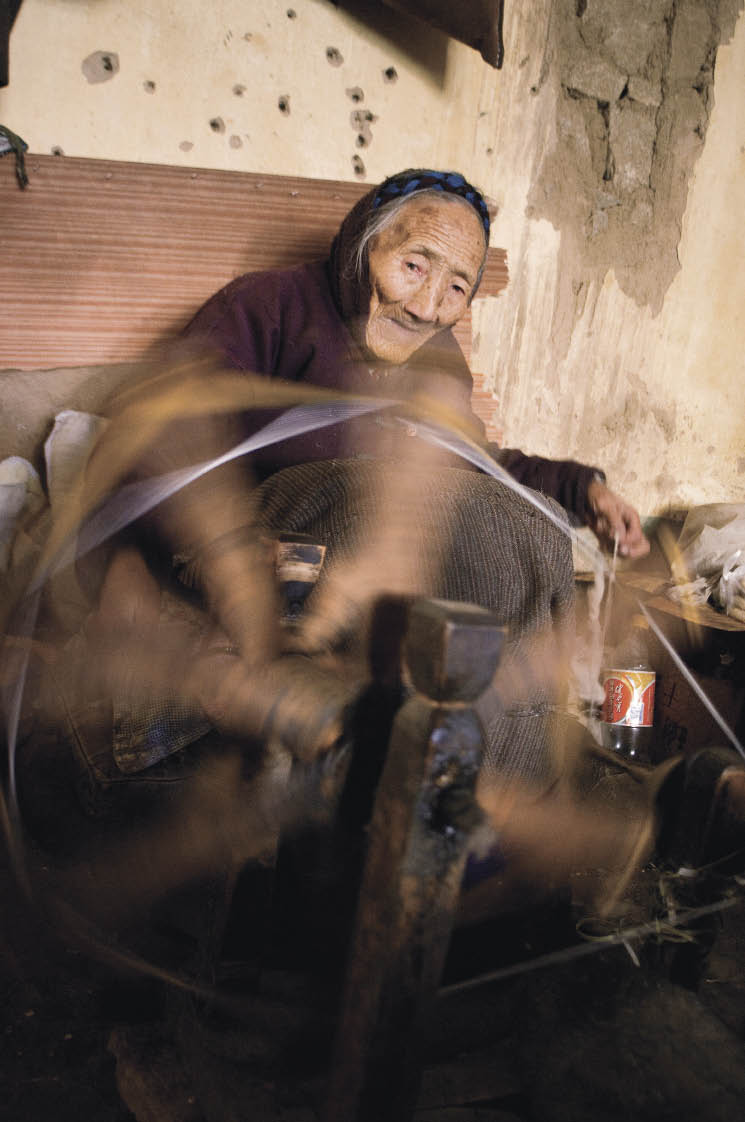
How impressive is Buckley's corporate citizenship really? If you think of Buckley's business as a series of concentric circles, at the core is the Tibetan workshop. Tanva employs 50 onsite workers, consisting of 35 weavers and 15 support staff. The second ring is the artisans supported by the local community resource for washing and spinning wool. About 60 wool spinners are engaged in making handspun yarn for Tanva's rugs, including spinning collectives that employ older women who would otherwise be on state assistance or reliant on their families. It typically takes a day to make a kilo of handspun wool and "using handspun yarn is as important as traditional knotting for making a fine handmade rug" Buckley points out, because handspinning retains the natural strength and texture of the wool that is lost in machine-spinning.
Also part of this second ring are those artisans who take part in Torana's outsourcing of contract 'manufacturing'. This outsourcing brings income to cash-poor rural villages that are otherwise dependent on subsistence farming. The outer circle is Torana's sphere of influence, and it stretches wide: the nomads and herders whose wool is purchased for the workshop and the yarn bank, the people who benefit from Tanva's considerable training outreach efforts, and the interior designers and architects in China and worldwide who benefit from Tanva's bespoke rug weaving services.
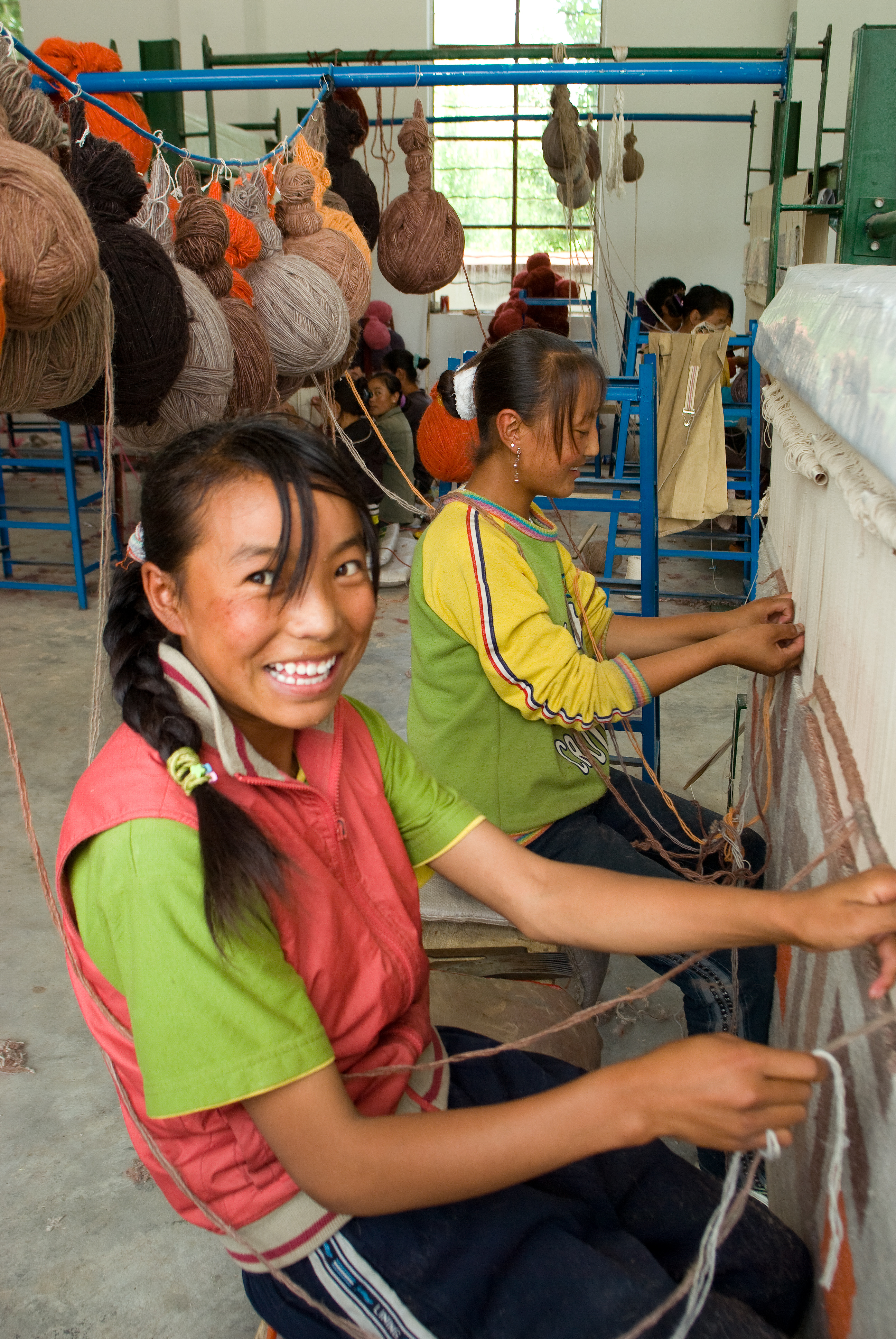
Investing in the knowledge and skills of the population is the most important objective of all where sustainability comes in.
Trainees at Tanva can access government grants to offset the costs of a six month period of live-in training and apprenticeships run by the workshop. To date two groups of government-sponsored trainees have graduated from Torana's training course and a third group of handicapped weavers is currently learning the weaving art. This year Tanva is cooperating with the Lhasa Women's Federation to cast the net wider for trainees who can benefit from skills training in traditional weaving.
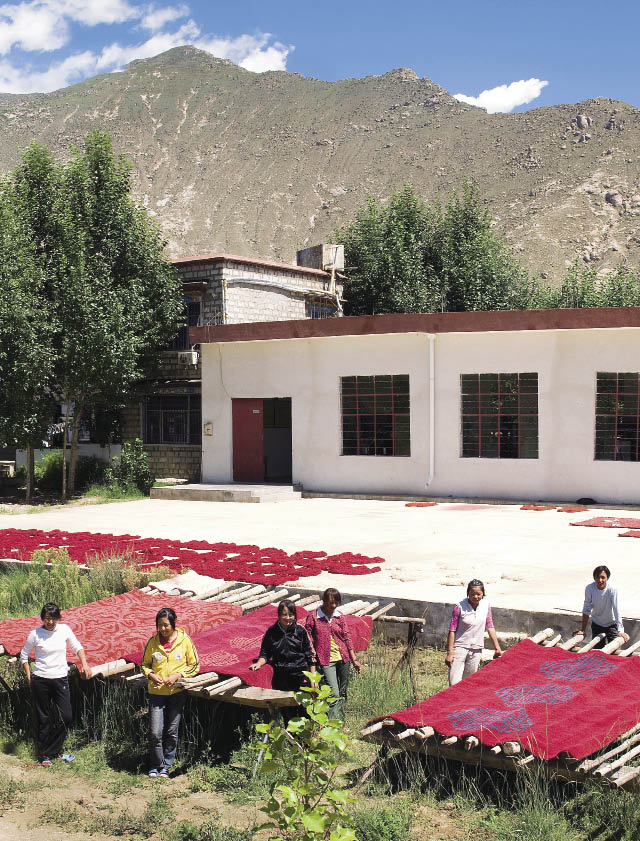 But Torana's do-gooding goes beyond creating a feeder system for its business. They have produced a manual on natural dye making and usage that encodes the knowledge Buckley painstakingly gathered and preserved from the Tibetan rug-making heritage. They also train weavers in the region to upgrade their techniques to meet commercial standards, a move that does not consider whether the better-trained weavers then compete or work for Tanva, or both. Buckley says "it doesn't matter whether our trainees choose to work for us after their training is complete or prefer to weave in their own villages. Either way it builds a skill base we can tap into, but more important to the culture, the making of traditional textiles in Tibet continues."
Buckley's dedication to recovering traditional techniques goes on. Currently he is researching Tibetan flatweaving techniques used for making horse blankets, yak collars and tent materials. The remarkable strength and durability of yak hair has been known for centuries and exploited by nomads for making traditional black tents used on their annual migrations. Now Buckley is seeking to restore its use for making traditional Wangden carpet warp foundations and other goods that can be sold in China and overseas.
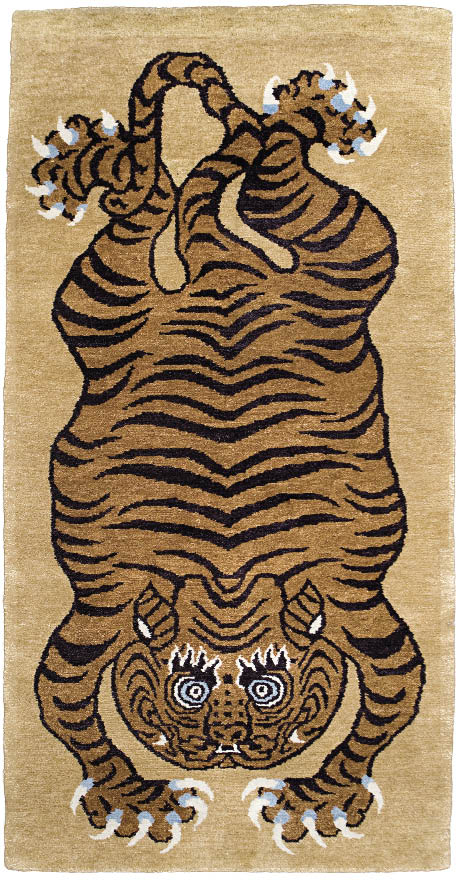 A decade of devotion to cultural preservation and social responsibility may impress the buyer of the end product, but their value may also lie in the modernization of rug designs. Buckley has indulged his passion for design and color, making patterns for new rugs that incorporate items as disparate as an emperor's seal, a maze, lattice work, the Great Wall, as well as reworkings of traditional Tibetan designs like tiger rugs and a Ningxia dragon carpet. Simpler designs like their animal prints can be 'farmed' out to cottage weavers without requiring oversight. The color schemes also deliberately provide a choice of the more subtle pallets favored by Westerners, while keeping traditional bright combinations favored in Tibet. Interestingly, some of the designs traditionally favored in the region are drawn from Han silks made as gifts to Tibetan monastaries during the Ming dynasty. Buckley has isolated and stylized some elements like the highly recognizable Chinese cloud design and the flames surrounding the heads of wrathful Tibetan gods, creating carpets with designs that work well in modern homes.
In keeping with Tibet's exemplary environmental practices, Tanva's selection of of non-toxic starting materials and processes means it also leads the field in eco-consciousness and product safety in the carpet business in China. What's not to love?
|
| VOL.59 NO.12 December 2010 | Advertise on Site | Contact Us |